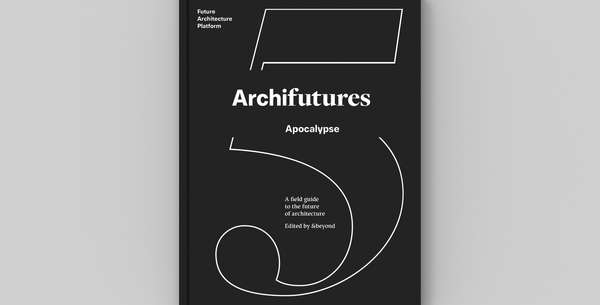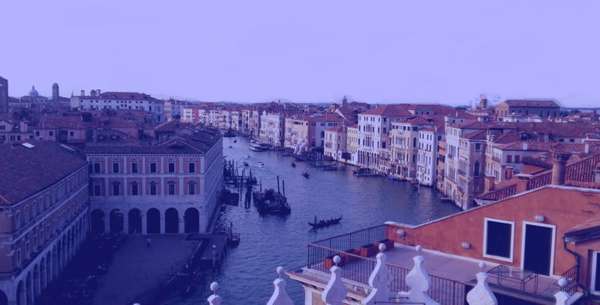Idea by
Miruna Dunu
Call for ideas 2018
Coastland
Coastland
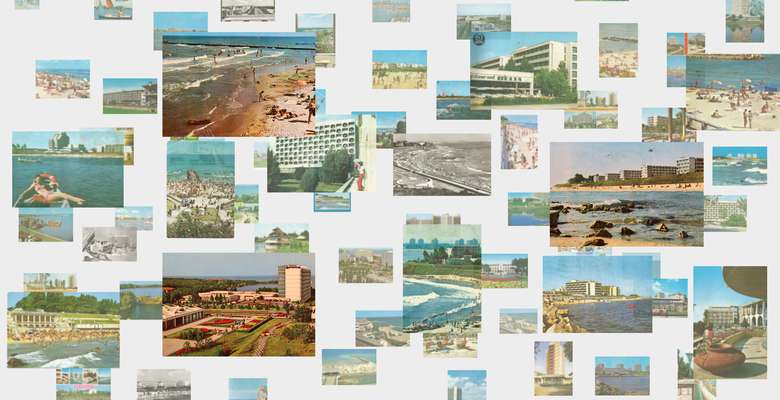
The film Coastland presents a fictional narrative rooted into architectural research. The story of the Western Black Sea coast begins in a distant future and goes back to its roots, only to reveal cyclical destruction and rebirth. Since in my perception, architecture is ideology materialised, the idea behind Coastland would influence the future of architecture by bringing more awareness to both the user and the architectural designer. Using the power of storytelling to illustrate the destiny of a very specific architecture, the film reveals the political and social mechanisms that ultimately fuel the spatial production. By analysing architecture and sensing the unseen forces behind it, one can employ a better understanding of the human - designed-space relationship. Created solely out of authentic postcards, Coastland seeks to inspire and stimulate reflection upon our architectural and urban reality and question the future premises of spatial production. (film password: 2050)
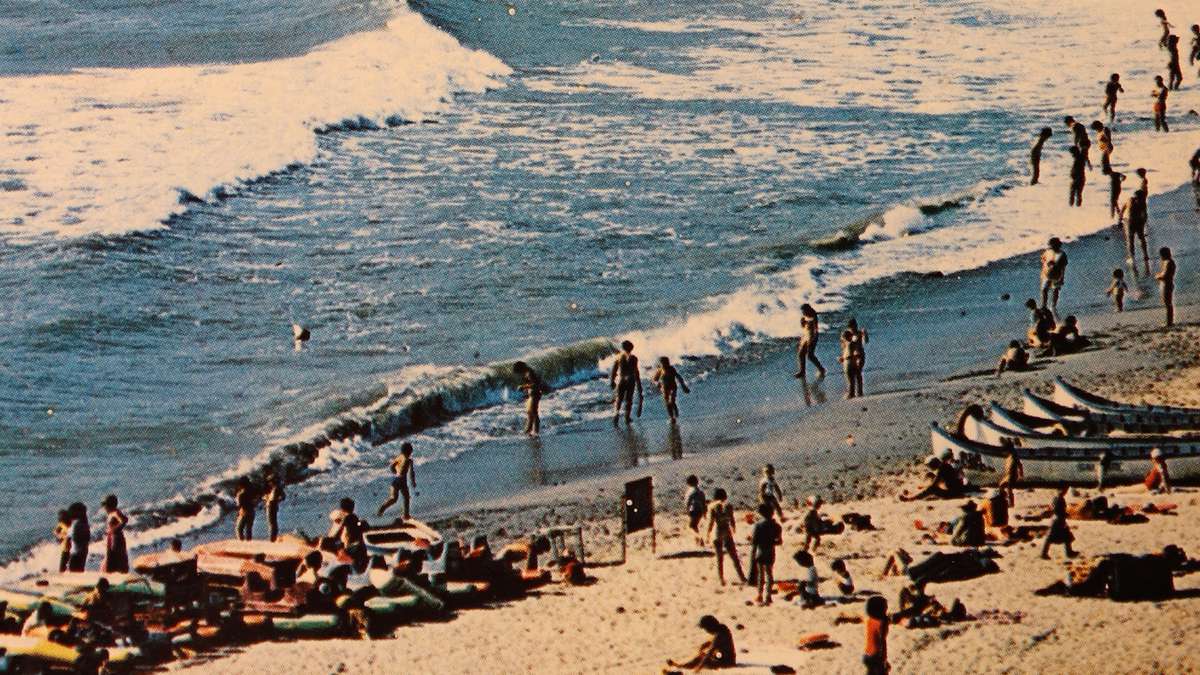
Film still depicting people reclaiming land after the Flood. In this scene, the rebuilding of cities starts from mere repopulation of the waterfront and culminates with the imposing silhouettes of new cities on the horizon line. [Film: 2'24", image from original postcard]

Film still illustrating elegant resorts and their enchanting landscape. The architectural dimension is crucial for creating the proper atmosphere; it almost acts as a scenography for a carefully-staged act. From a political point of view, architecture was instrumental for showcasing technological advancement in an ideological race for superiority. [Film: 6'39", image from original postcard]

Film still showing the survivors right after the Flood. The beginning of the film depicts a weakened, yet not defeated humanity, ready to fight for survival and reestablish its lost glory. [Film: 1'10", image from original postcard]

Film still of the building known in the film as "The Centre". It was one of the first institutions established after the Flood to help rehabilitate the survivors and facilitate humanity's revival. As part of the story-telling, architecture is used to provide strong symbols and illustrate the atmosphere. [Film: 2'14", image from original postcard]
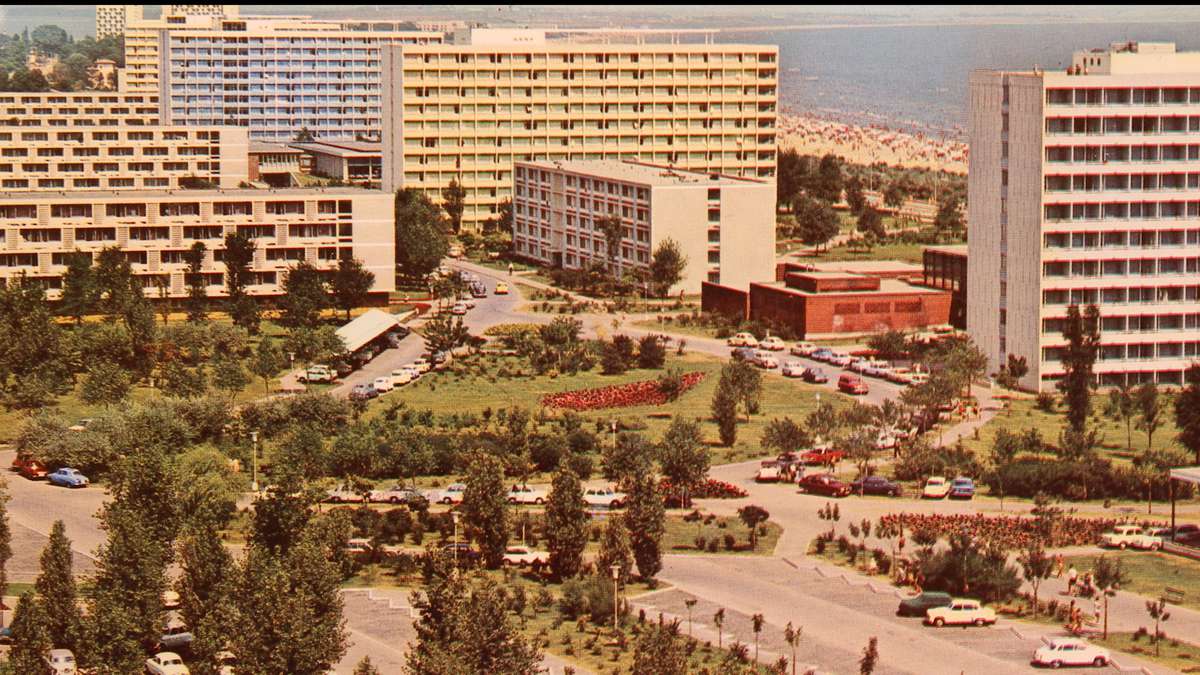
Film still depicting the great architectural scale of the seaside establishments. The viewer is offered a godlike view over the creation; or does one contemplate through the eyes of the architect? The massive scale makes a social and political statement about the seaside architecture and the mechanism that fuelled it. [Film: 5'59", image from original postcard]
Coastland
Coastland

The film Coastland presents a fictional narrative rooted into architectural research. The story of the Western Black Sea coast begins in a distant future and goes back to its roots, only to reveal cyclical destruction and rebirth. Since in my perception, architecture is ideology materialised, the idea behind Coastland would influence the future of architecture by bringing more awareness to both the user and the architectural designer. Using the power of storytelling to illustrate the destiny of a very specific architecture, the film reveals the political and social mechanisms that ultimately fuel the spatial production. By analysing architecture and sensing the unseen forces behind it, one can employ a better understanding of the human - designed-space relationship. Created solely out of authentic postcards, Coastland seeks to inspire and stimulate reflection upon our architectural and urban reality and question the future premises of spatial production. (film password: 2050)
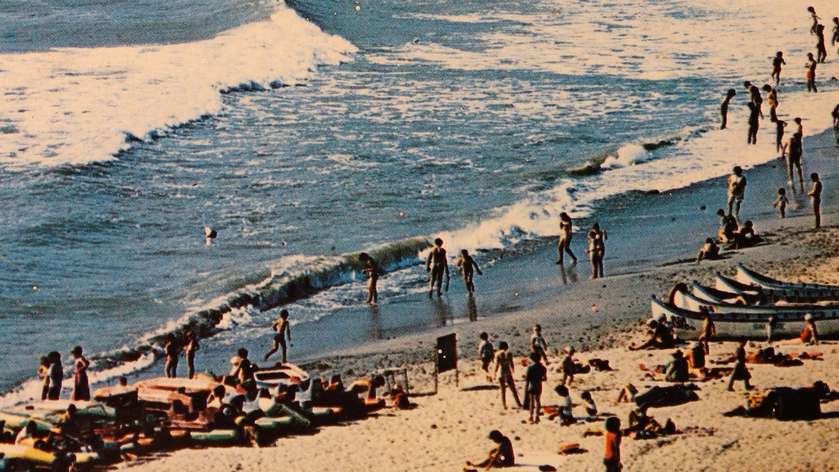
Film still depicting people reclaiming land after the Flood. In this scene, the rebuilding of cities starts from mere repopulation of the waterfront and culminates with the imposing silhouettes of new cities on the horizon line. [Film: 2'24", image from original postcard]

Film still illustrating elegant resorts and their enchanting landscape. The architectural dimension is crucial for creating the proper atmosphere; it almost acts as a scenography for a carefully-staged act. From a political point of view, architecture was instrumental for showcasing technological advancement in an ideological race for superiority. [Film: 6'39", image from original postcard]
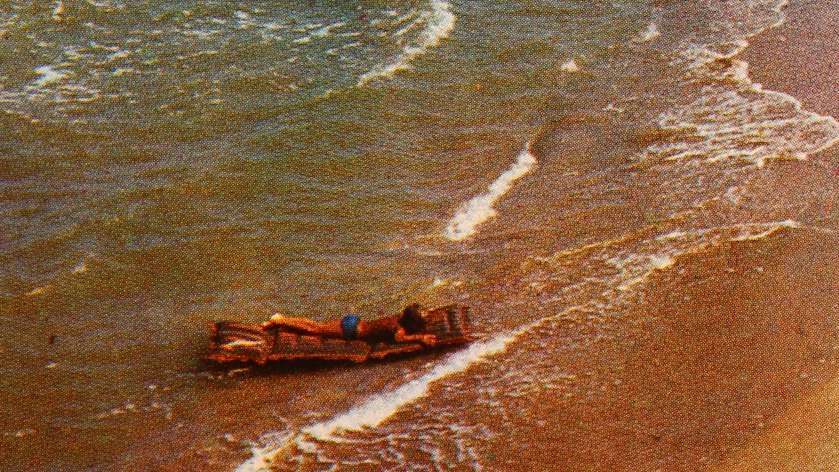
Film still showing the survivors right after the Flood. The beginning of the film depicts a weakened, yet not defeated humanity, ready to fight for survival and reestablish its lost glory. [Film: 1'10", image from original postcard]
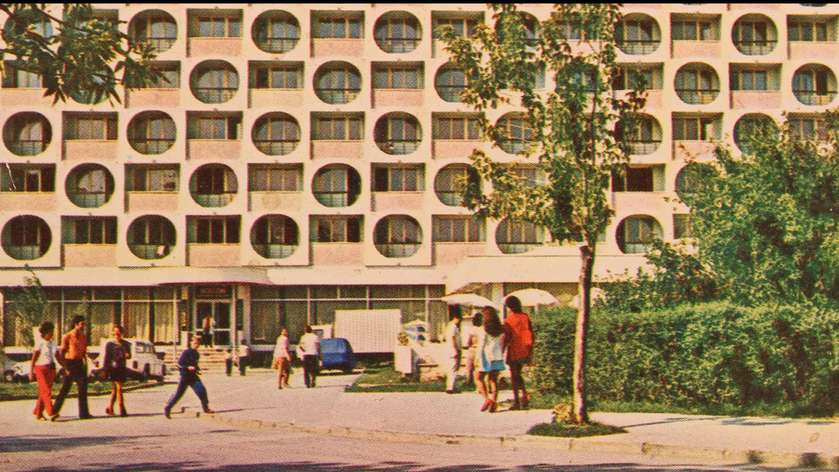
Film still of the building known in the film as "The Centre". It was one of the first institutions established after the Flood to help rehabilitate the survivors and facilitate humanity's revival. As part of the story-telling, architecture is used to provide strong symbols and illustrate the atmosphere. [Film: 2'14", image from original postcard]
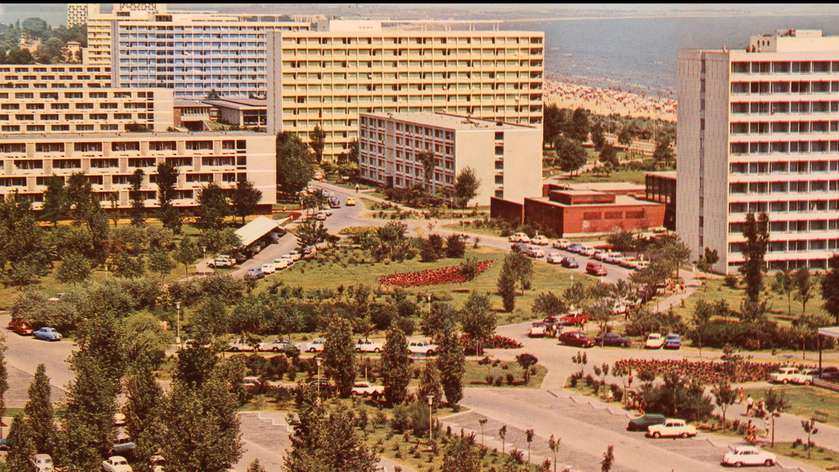
Film still depicting the great architectural scale of the seaside establishments. The viewer is offered a godlike view over the creation; or does one contemplate through the eyes of the architect? The massive scale makes a social and political statement about the seaside architecture and the mechanism that fuelled it. [Film: 5'59", image from original postcard]
